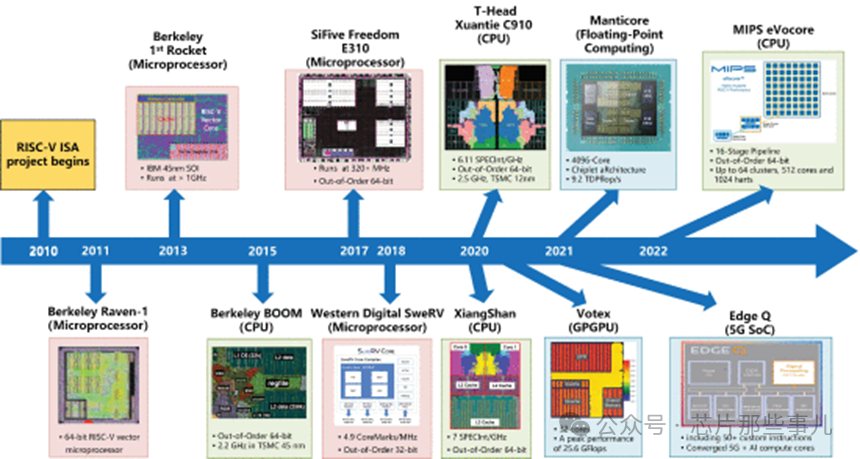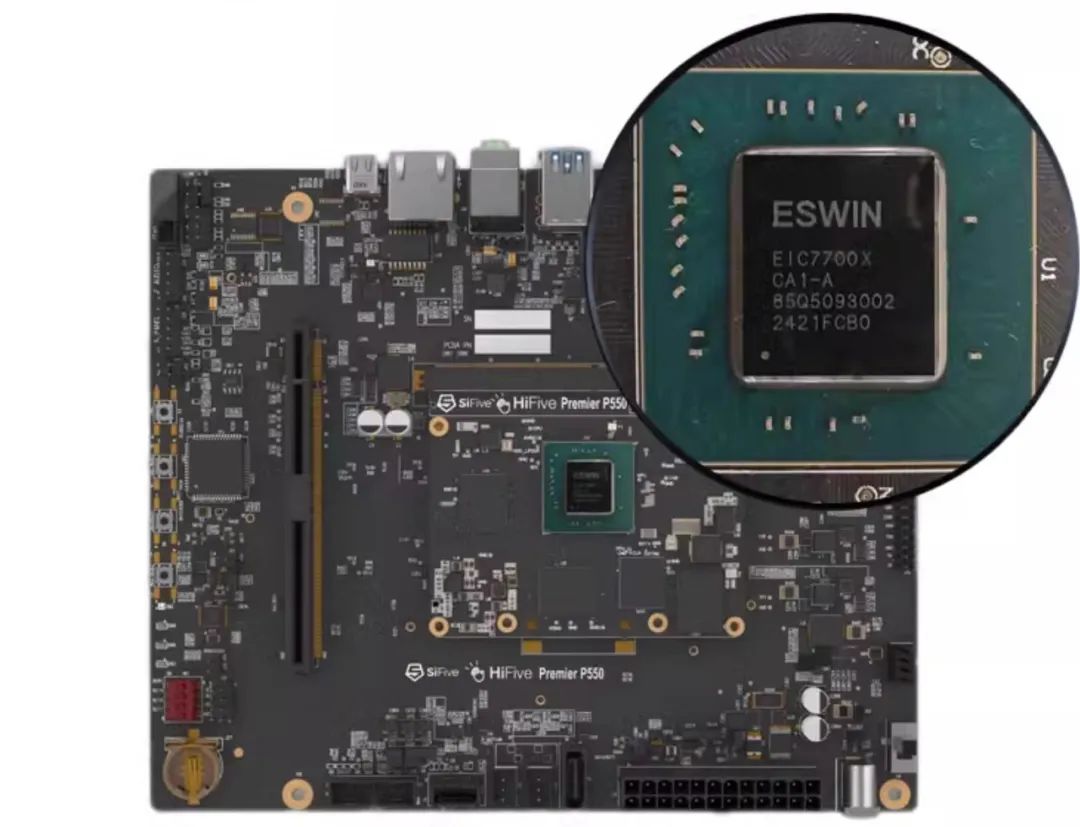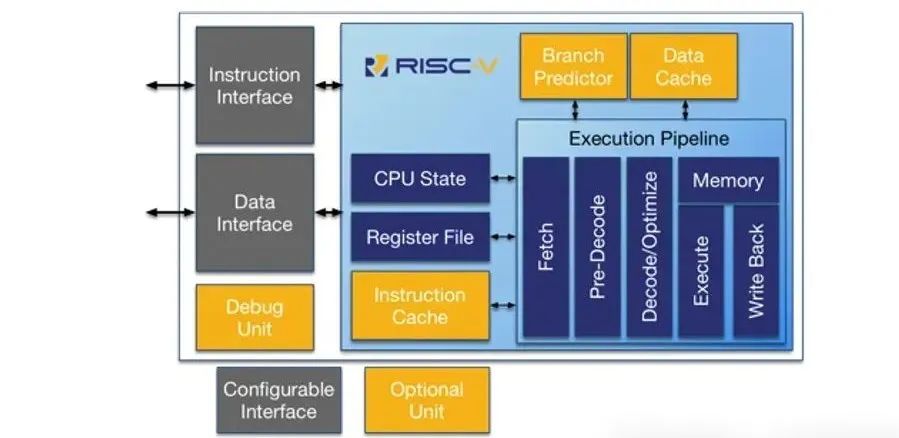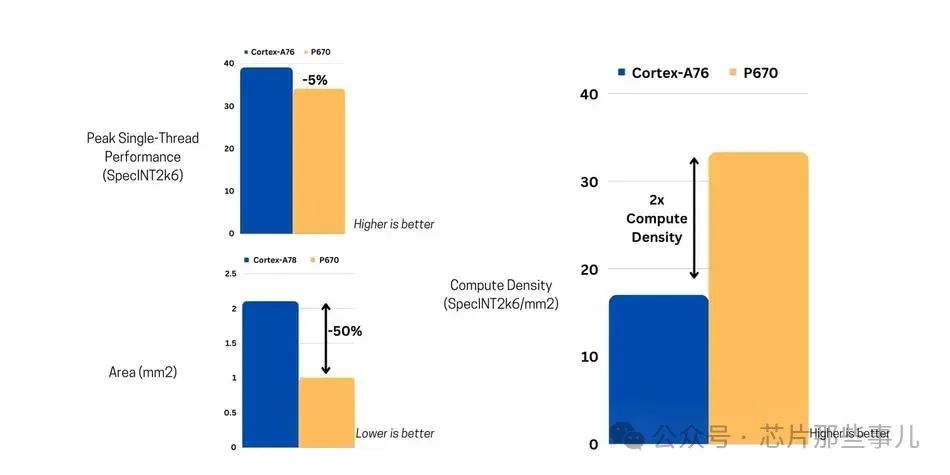RISC-V and ARM are the two most prominent processor architectures in recent years. ARM, launched in the 1990s, is a RISC ISA (Instruction Set Architecture) that has benefited from the rise of smartphones, with cumulative shipments of ARM cores exceeding 100 billion units. It has gained a reputation based on years of trust and accumulated expertise, being regarded as the preferred choice for embedded systems and mobile devices before the emergence of RISC-V. In contrast, RISC-V is a younger instruction set architecture characterized by its “open-source” nature, which has gradually allowed it to surpass ARM as a new choice for embedded systems and certain devices.
By comparing the advantages and disadvantages of both architectures, we will analyze and predict their potential impact on the future of computing. This article will delve into the development history, architectural features, performance, energy efficiency, software and hardware, ecosystems, licensing, and applications of RISC-V and ARM. Through a comparative analysis, we aim to provide a comprehensive understanding of the strengths and weaknesses of both architectures, enabling readers to make informed decisions about which architecture best suits their needs in the future.
1. What is ISA (Instruction Set Architecture)?
ISA is a complete definition of the interface between software and hardware. It defines the set of all instructions that a computer can execute, specifying what operations each instruction performs, where the operands are stored, and the types of operands involved.It serves as the fundamental architecture between hardware and software, and the choice of processor ISA affects the way system software is developed, having a lasting impact on the efficiency, compatibility, and flexibility of the core processor.
Instruction set architectures can be divided into two categories based on openness and closure. Closed ISAs, like ARM, are strictly controlled by specific companies (Arm Holdings), providing some compatibility for users but limiting customization based on customer needs, which greatly restricts ARM’s development and innovation. In contrast, open ISAs like RISC-V are community-driven, offering greater flexibility for customization, promoting innovation, and adapting to specific requirements.
The ongoing debate between RISC-V and ARM revolves around the different ISAs they embody, with many ISAs providing unique advantages and approaches to meet the ever-changing computing demands.
2. RISC-V vs. ARM: Development History
Reviewing the development history of instruction set architectures. The popularity of the internet and personal computers established the dominance of the x86 architecture, driving the rise of companies like Intel and AMD. Meanwhile, the advent of 4G networks and smartphones led to the success of low-power and lightweight ARM, which thrived during the smartphone era, significantly promoting the development of Reduced Instruction Set Computing (RISC).
However, as an instruction set architecture exclusively provided by ARM, using ARM requires payment of licensing fees, and customization is limited. This type of restriction hinders small businesses, startups, and researchers from fully participating in advanced processor development. RISC-V aims to address these limitations by providing an open-source alternative. Thus, the motivation behind RISC-V’s development stems from a desire for greater openness, customization, and innovation in the CPU architecture field.
ARM
ARM, along with MIPS and RISC-V, belongs to the RISC (Reduced Instruction Set) camp, originating from the British company Acorn Computers. In 1985, Acorn Computers launched its first RISC processor architecture designed for personal computers, characterized by its lightweight and low power consumption. In 1990, Acorn Computers, Apple, and VLSI Technology formed a joint venture called Advanced RISC Machines Ltd., which later became the well-known ARM Holdings..
The earlier generations of ARM processors were primarily used in Acorn’s Archimedes series of computers. It wasn’t until 1993 that Apple adopted the ARM610 processor for its Newton personal digital assistant (PDA), which gained widespread recognition in the industry, leading to ARM’s popularity in the mobile and embedded systems market and laying the foundation for its dominance in these sectors.
As ARM expanded in the market, it gradually found applications in various fields such as automotive, industrial, and high-performance computing. To meet increasingly complex demands, ARM developed multiple series of processors, including the Cortex-M series for microcontrollers and low-power devices, the Cortex-R series for real-time systems, and the Cortex-A series for high-performance applications. ARM architecture has become the de facto standard for mobile devices, IoT, and embedded systems, with products from major companies like Apple, Samsung, and Qualcomm relying on ARM processors.
RISC-V
RISC-V originated from the Computer Science Department at the University of California, Berkeley. The project was initiated in 2010, led by Professor Krste Asanović, Professor David Patterson, and their team.

The main development history of RISC-V ISA, source: internet
2010: The design and development of the RISC-V instruction set officially began at UC Berkeley. The team’s goal was to create a fully open-source, free instruction set architecture to promote education and research, as well as encourage more companies and organizations to adopt it.
2011: The first version of the RISC-V instruction set (RV32I) was released as a 32-bit basic integer instruction set for educational and academic research.
2014: The RISC-V Foundation was established to promote the open-source and standardization of the RISC-V ISA. The foundation has since grown to over 4,000 members, including major chip companies like Google, NVIDIA, and Qualcomm.
2017: The RISC-V privileged architecture specification was released, defining the interface between hardware and operating systems, enabling the development of more complex RISC-V processors. This specification also facilitated the porting of operating systems like Linux to the RISC-V platform.
2024: SiFive, in collaboration with ESWIN, released the SiFive HiFive Premier P550 development board based on the ESWIN RISC-V chip. This processor demonstrated RISC-V’s application in high-performance computing and paved the way for further industry adoption of this architecture..

SiFive HiFive Premier P550 development board based on ESWIN RISC-V chip, source: internet
RISC-V has rapidly gained popularity across various industries, with NVIDIA GPUs fully adopting the RISC-V instruction set architecture, and Qualcomm developing a smartwatch processor based on the RISC-V instruction set architecture, Snapdragon Wear.
3. RISC-V vs. ARM: Instruction Set Architecture
1. RISC-V:

Source: Roalogic RISC-V architecture is based on RISC principles (efficient compared to CISC), emphasizing a small, simple instruction set.
The core features of the RISC-V architecture are reflected in several aspects: first, it adopts a load-store architecture, meaning all data operations are completed through load and store instructions, while computations are performed only in registers. Secondly, RISC-V uses a fixed-length 32-bit instruction format, simplifying instruction decoding and pipeline processing complexity. Additionally, RISC-V has a smaller number of general-purpose registers, which helps optimize hardware resource utilization.RISC-V also supports various integer instruction set extensions, such as RV32I (32-bit), RV64I (64-bit), and RV128I (128-bit), providing a basic integer instruction set for different address space sizes. In terms of memory systems, RISC-V adopts little-endian byte ordering, meaning the least significant byte of multi-byte data is stored at the lowest memory address, which helps improve memory access efficiency. These features enable RISC-V to achieve a good balance between flexibility and performance, making it suitable for various application scenarios.
Here are some unique features of the RISC-V architecture:
1. Customization and Scalability: A core characteristic of RISC-V is its high degree of customization and scalability. The ISA supports easy expansion through custom instructions and coprocessors to meet specific application needs. Its flexibility is reflected in the combination of the basic ISA and optional standard extensions, such as the M extension for integer multiplication and division, the A extension for atomic operations, and the F and D extensions for single and double precision floating-point operations.
2. Compressed Instruction Set: Compared to ARM’s Thumb instruction set, RISC-V supports the RV32C compressed instruction set extension, providing 16-bit compressed instructions that can be mixed with standard 32-bit instructions. This feature reduces code size and enhances energy efficiency, making RISC-V particularly suitable for embedded systems and low-power applications.
3. Privilege Levels and Virtual Memory: RISC-V architecture supports privilege levels and virtual memory. Its privileged architecture defines different levels (such as machine mode and supervisor mode) for isolating the operating system kernel, hypervisors, and user applications, ensuring system security and stability. Additionally, RISC-V achieves efficient virtual memory management and protection through a multi-level page table scheme.
2. ARM:
ARM architecture is also based on RISC principles, focusing on power efficiency and simplicity.
ARM architecture, source: internet
ARM’s main architectural features include a load-store architecture, a mix of fixed-length 32-bit and variable-length Thumb instructions, and a large number of general-purpose registers. The memory system uses bi-endian byte ordering, allowing ARM processors or machines to seamlessly handle and transfer data in both formats at the hardware level.
ARM processors are divided into three main categories: Cortex-A, Cortex-R, and Cortex-M. Cortex-A targets high-performance applications (such as smartphones and servers), supporting out-of-order execution and hardware virtualization; Cortex-R is optimized for real-time systems (such as automotive and industrial), enhancing interrupt response and deterministic behavior; Cortex-M focuses on low-power microcontrollers, emphasizing energy efficiency and ease of use.
1. Thumb Instruction Set: ARM processors support both ARM and Thumb instruction sets, with Thumb providing 16-bit compressed instructions as an optional extension to the 32-bit ARM instructions. This design improves code density while maintaining performance, making it particularly suitable for memory-constrained embedded systems.
2. Memory Management and Protection: ARM processors offer different levels of memory management and protection, including memory protection units (MPUs) for simple systems and memory management units (MMUs) for complex virtual memory systems. The ARMv8-A architecture, introduced in 2011, added support for 64-bit address space and introduced the AArch64 execution state, providing a new 64-bit instruction set while maintaining compatibility with existing 32-bit ARM and Thumb instruction sets.
3. Optional Enhancements: ARM processors support optional extensions, such as NEON SIMD (for multimedia and signal processing) and cryptographic extensions (for hardware-accelerated encryption and decryption). These extensions enable efficient handling of various workloads while maintaining low power consumption and small chip area.
ARM continues to dominate in mobile, embedded systems, and data centers, thanks to its strong ecosystem and corporate support. However, RISC-V is attracting an increasing number of developers and innovators with its open-source and customizable features. Both architectures have their advantages, with RISC-V appealing to those prioritizing customization and open standards, while ARM’s refined products cater to a wide range of applications across different industries.
4. RISC-V vs. ARM: Performance
Comparing RISC-V and ARM architectures involves various structures that affect performance. Let’s explore some of these structures while comparing specific models, such as the P550 with the Cortex-A75 and BeagleV with Raspberry Pi.

1. Core Generations and Advances: SiFive’s P550 performs comparably to ARM’s Cortex-A75, demonstrating the competitiveness of RISC-V against mature ARM cores. However, ARM continues to release new generations such as A76, A77, A78, X1, and X2, with the iterative A76, A77, and A78 maintaining performance advantages.
2. Core Performance and Efficiency: BeagleV’s U74 core performance is comparable to ARM’s Cortex-A55, while the Cortex-A72 used in Raspberry Pi offers better performance and cost advantages. ARM provides a variety of mature core options to cover different performance needs.
3. Ecosystem and Industry Adoption: ARM dominates the industry with its extensive ecosystem, gaining widespread software and hardware support. Companies using ARM processors can leverage established infrastructure to accelerate development and deployment.
4. Customization and Openness: RISC-V’s customizable and scalable architecture offers potential advantages that ARM’s infrastructure may lack. However, ARM’s strong track record, stability, and established standards provide a solid foundation for performance optimization.
5. Catching Up and Future Prospects: To meet ARM’s performance standards, RISC-V supporters like SiFive need to continue advancing their core designs to close the gap. ARM’s ongoing development requires RISC-V to keep pushing forward to catch up in terms of performance and ecosystem maturity.
ARM’s Cortex-A76 slightly outperforms SiFive’s P670 (RISC-V) in single-thread performance, but the P670 has double the compute density and a smaller chip size, with performance close to that of the Cortex-A76. The Cortex-A76 was launched in 2020, based on the ARMv8 architecture, while ARMv9 processors have improved performance and energy efficiency by 30% and 50%, respectively. Despite ARM’s advantages in performance and ecosystem, RISC-V demonstrates competitiveness in areas like wearables due to its high compute density and customization potential. The ongoing development of RISC-V will determine its ability to narrow the performance gap with ARM.
5. RISC-V vs. ARM: Efficiency
RISC-V
Comparing the energy efficiency between RISC-V and ARM architectures reveals their respective strengths in managing parameters. Since both architectures adopt the RISC (Reduced Instruction Set Computing) philosophy, it is essential to delve into specific data that differentiate their energy efficiency performance and key areas for improvement.
Power efficiency is a critical aspect of processor design, especially for embedded systems, IoT devices, and battery-powered applications. The architecture of RISC-V enhances simplicity and customizability, along with more complex architecture processors, which helps improve power efficiency. The RISC-V ISA allows for processors to be implemented with a smaller silicon footprint, reducing power consumption and enabling the design of energy-efficient devices.
Several features of the RISC-V architecture contribute to its energy efficiency. The fixed-length 32-bit instruction format improves decoding and reduces control logic complexity, thereby lowering power consumption. The optional RV32C (or RV64C) compressed instruction set extension provides 16-bit compressed instructions, which can help reduce code size and improve performance by lowering instruction fetch and decode requirements.
Moreover, RISC-V’s custom design allows for tailored extensions and hardware accelerators to meet specific application needs. This enables the development of processors that include only the necessary features, reducing power consumption by eliminating unused hardware functionalities.
Examples of energy-efficient RISC-V processors include the PULPino processor designed for IoT and wearable devices, and the GreenWaves GAP8 processor aimed at edge energy-efficient AI and machine learning applications. The GAP8 processor, featuring eight RISC-V cores and a dedicated hardware accelerator for USB neural networks (CNN), can achieve power efficiency of up to 200 GOPS/W (giga operations per second per watt).
ARM
Since the inception of the ARM architecture, its primary focus has been on energy efficiency, making it the preferred choice for mobile and embedded applications. ARM processors are designed to deliver performance at low power, supporting the development of energy-efficient devices across various applications.
Several features of the ARM architecture contribute to its energy efficiency. The use of load-store architecture, along with a mix of fixed-length 32-bit and variable-length Thumb instructions, simplifies decoding and reduces control logic complexity, thereby lowering power consumption. Additionally, ARM processors typically include power management features, such as dynamic voltage and frequency scaling (DVFS), allowing processors to adjust their operating frequency and voltage based on workload demands, further enhancing energy efficiency.
ARM’s processor series (such as Cortex-A, Cortex-R, and Cortex-M) are designed with different power and performance targets in mind. For example, the Cortex-M series is optimized for microcontrollers and low-power devices, with the Cortex-M4 processor operating at frequencies up to 240 MHz and achieving performance of 1.25 DMIPS/MHz, including hardware floating-point units (FPU) and DSP (digital signal processing) extensions, making it ideal for low-power signal processing and control applications.
In terms of performance, ARM processors like the Cortex-A76 achieve excellent performance-per-watt ratios, making them ideal choices for power-sensitive performance devices such as smartphones and laptops. The Cortex-A76 processor operates at frequencies up to 3 GHz, with peak performance of 4.0 DMIPS/MHz while maintaining low power consumption.
Overall, ARM’s focus on power efficiency, combined with its extensive ecosystem and wide range of processor series, drives the development of energy-efficient devices across various industries and applications.
Considering the growing numbers and industry trends, we conclude that ARM’s sophisticated power management technologies and dedicated cores have a clear advantage in power efficiency. ARM’s mature ecosystem, widespread industry adoption, and strong performance record amplify its advantages. While RISC-V has customization potential and a bright future, its openness requires more time and resources to fully realize its energy-saving capabilities.
6. RISC-V vs. ARM: Ecosystem and Support
The ecosystem and support surrounding architecture choices play a crucial role in determining their practical appeal. In the context of RISC-V and ARM, it is essential for organizations seeking the best solutions for their projects to evaluate the strengths and weaknesses of their respective ecosystems and support structures.
1. Ecosystem
1.1 RISC-V:
As an open-source architecture, RISC-V has attracted an impressive community of developers, companies, and researchers, with over 200 members, including major tech companies like Google, NVIDIA, and Western Digital. Compared to ARM, RISC-V’s ecosystem is relatively young but rapidly developing. While it may not match ARM’s scale, its open characteristics foster collaboration, customization, and innovation.
1.2 ARM:
ARM has cultivated a mature and extensive ecosystem. Its licensing model has spawned a vast array of ARM-based products, with over 180 billion ARM chips shipped to date. Its ecosystem encompasses a wide range of hardware partners, software tools, and mature development boards. Ultimately, it provides a wealth of resources, support, and successful integration for various applications.
2. Hardware and Software
2.1 RISC-V:
In terms of hardware support, several semiconductor companies have developed RISC-V processors and system-on-chip (SoC) solutions, including SiFive, Andes Technology, and Microchip. These companies offer a variety of RISC-V-based products with low power consumption. Additionally, RISC-V’s open-source technology has led to the development of many open-source processor designs, such as PULPino and the RISC-V BOOM out-of-order superscalar processor. As Amazon and other tech companies explore RISC-V’s capabilities, the landscape of CPU architecture is undergoing significant changes, with open-source hardware gaining increasing importance in previously untapped areas.
In terms of software, the RISC-V ecosystem includes support for various operating systems, including Linux, FreeBSD, and real-time operating systems (RTOS) like FreeRTOS and Zephyr. Although the RISC-V ecosystem is relatively new, it is rapidly expanding. Its openness encourages experimentation and specialization, allowing developers to customize specific solutions to meet their needs. While the ecosystem may not be as mature as ARM’s, it offers flexibility and potential for niche applications.
2.2 ARM:
Major semiconductor companies like Qualcomm, Samsung, and Apple have developed their own ARM-based processors, catering to various market segments and performance requirements. These processors are used in a wide range of devices, including smartphones, tablets, IoT devices, and embedded systems. In terms of software, the ARM ecosystem supports various operating systems, including Linux, Android, iOS, and Windows, as well as real-time operating systems (RTOS) like FreeRTOS and VxWorks.
ARM benefits from a comprehensive and mature ecosystem. Its architecture supports a wide range of devices, from smartphones to servers, ensuring a broad array of hardware options, software tools, and libraries. Developers can choose from various development boards, compilers, and debugging tools.
3. Industry Applications
3.1 RISC-V:
RISC-V is gradually gaining attention in key areas such as customization, openness, and innovation. Its adoption may not be as widespread as ARM’s, but its growing presence in edge computing, desktop systems, and IoT indicates that an ecosystem meeting specific needs is continuously evolving.
3.2 ARM:
ARM’s widespread application across various industries provides stable and well-supported solutions. Its architecture deeply penetrates various fields, making it the preferred choice for mass developers. The proliferation of ARM-based devices ensures a closed market and a robust ecosystem.
Overall, while ARM’s extensive ecosystem offers stability, mature tools, and a wide range of hardware options, RISC-V’s open-source characteristics promote collaboration, customization, and innovation. The choice between the two architectures depends on the specific requirements of the project, with ARM catering to mature industries while RISC-V provides a platform for those seeking flexible and unique solutions.
4. Licensing and Business Models
The world of semiconductor architectures is defined by technological capabilities; it is also influenced by the business and licensing strategies of key players. This article will delve into the licensing and business models of RISC-V and ARM, exploring how these approaches impact processor development, adoption, and customization.
4.1 RISC-V:
Open Source and Openness: RISC-V operates under royalty-free licenses such as the Apache License 2.0, allowing developers to freely access, modify, and distribute the architecture, fostering collaboration and innovation in an open environment.
Flexible Customization: RISC-V’s open-source nature enables users to extend and configure the instruction set according to specific application needs, creating highly optimized processor designs.
Cost Reduction: RISC-V does not require licensing fees, significantly reducing development and production costs compared to ARM’s high licensing costs, making it highly attractive to users.
Autonomy and Control: RISC-V breaks the monopoly of x86 and ARM, providing users with more choices, reducing dependence on a single vendor, and enhancing control over processor design.
4.2 ARM:
Licensing Model: ARM employs a tiered licensing system, allowing users to choose different access levels based on their needs, but the underlying structure is closed, preventing complete customization of designs.
Licensing Fees: ARM profits through licensing fees, which may increase costs for companies using ARM processors.
Vendor Dependence: Adopting ARM processors requires establishing partnerships with ARM, relying on them for advanced features and support.
In contrast, RISC-V offers advantages of openness, flexibility, low cost, and control, while ARM provides a mix of openness and closure, licensing fees, and a mature ecosystem. Both have their strengths, and organizations should choose the appropriate architecture based on project needs.
5. Industry Applications
5.1 ARM:
ARM processors, with their high efficiency, performance, and extensive ecosystem, are suitable for various scenarios. Their Cortex-A, Cortex-R, and Cortex-M series meet different market and performance needs, making them a universal choice across industries.
In the mobile device sector, ARM processors are the ideal choice for smartphones and tablets due to their energy efficiency and performance advantages. Manufacturers like Apple, Samsung, and Huawei use ARM processors to create flagship devices.
ARM is also widely used in embedded systems and IoT devices, such as smart sensors, home automation, and industrial control. The Cortex-M series is designed for low-power microcontrollers, with typical products including STMicroelectronics’ STM32 series and Nordic Semiconductor’s nRF52 series wireless SoCs.
In the data center and high-performance computing (HPC) market, the ARM Neoverse platform (such as N1 and E1 processors) provides high-performance solutions for cloud infrastructure and edge computing.
Additionally, ARM processors are used in safety-critical and real-time systems, such as automotive, aerospace, and industrial control. The Cortex-R series optimizes fast interrupt response and deterministic behavior, making it suitable for these high-demand scenarios.
5.2 RISC-V:
RISC-V processors, with their streamlined and scalable architecture, are suitable for various scenarios. The flexibility of its ISA supports custom designs to meet specific application needs, as evidenced by Amazon’s use of RISC-V to develop custom solutions.
In the low-power domain, RISC-V is an ideal choice for IoT devices and embedded systems due to its simplicity and efficient configuration, such as wearable devices and smart sensors. Typical examples include the GreenWaves GAP8 (for edge AI and machine learning) and PULPino (for IoT and wearable devices).
In the high-performance computing (HPC) and data center market, RISC-V’s customizable features support the development of high-performance processors, such as SiFive U74 and RISC-V BOOM, suitable for complex workloads like AI, machine learning, and big data analytics.
Additionally, RISC-V shows potential in safety-critical and real-time systems (such as automotive, aerospace, and industrial control). Its open-source characteristics support transparent and thorough verification, ensuring system security and reliability.